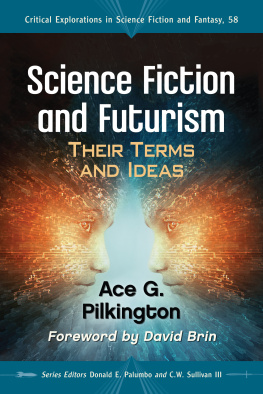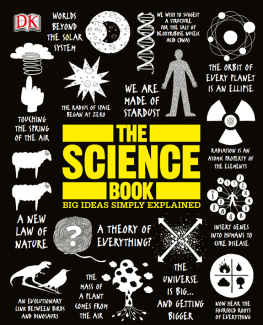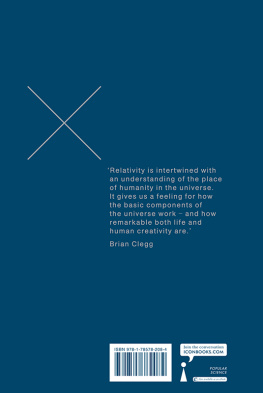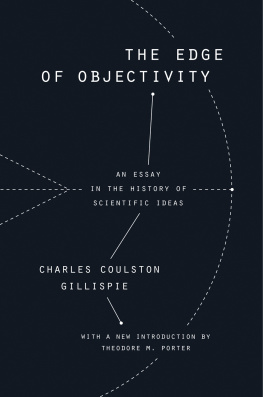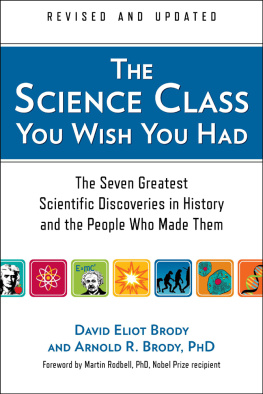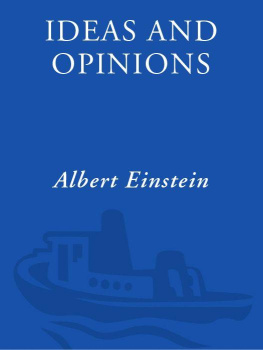To Jarod and Camille
FOREWORD
by Michael Stevens
Hello! My name is Michael Stevens and I wrote this foreword...
... or did I?
How do you actually know that I, Michael Stevens, wrote the words you are reading right now? Is it because you trust the author and publisher of this book? Is it because you follow me on social media and saw me claim to have written this? Perhaps. But did you actually see me write this? Can you really be sure that you know anything at all? Isnt there always some possibility, no matter how remote or unbelievable, that what you think you know is wrong? For that matter, what the heck does it mean to know something in the first place?
Maybe we can start by agreeing that whenever you say you know something, youre simply saying that you believe that thing to be truea description of reality as it isfor reasons that adequately convince you. Thats pretty good. And its that last bit, the reasons, that science concerns itself with. Science doesnt claim to deliver absolute philosophical truths, and it never promises to provide access to all answers, but as a means of investigation it has emerged as our most consistent, reliable, and adaptable weapon against mystery. As far as we know, it may also be the best well ever have.
To be sure, there are other ways to feel that you know something. For example, you could believe without question that a message in a dream or a voice in your head is true. Or your intuitive feeling that something must be true could be enough to satisfy you. But of all the methods weve got, the scientific method continues to be our most powerful. It doesnt shy away from being wrong or challengedin fact, if an idea isnt willing and able to be refuted, its probably not scientific at all!
And thats the beauty of science. It is not a tool for discovering truth; its a method for reducing uncertainty. When you think scientifically, you ask, How does the world work? How can I find out? And how can I become more and more certain that what Im finding is ever nearer the truth?
Science employs logic, skepticism, observation, and experimentation to not only find things out, but more importantly, to improve our confidence in (or heighten our suspicion of!) what weve found. It can often do such a good job that some ideas become so incredibly certain (like the roundness of the earth or the laws of motion) that its tempting to think of them as verified truths. But that does a disservice to the spirit of the scientific method. No matter how certain or replicable or elegant a hypothesis might be, skepticism and doubt must always be maintained if we hope to continue improving our understanding of realitynot a skepticism that blindly denies everything, but rather one that is a constant force pressuring us to devise experiments and make observations to challenge our beliefs and to be ready to change them when better information comes along.
The book you are holding is a treasure trove of some of the wonderful things we have discovered using science and its methods. It was written by one of the greatest science communicators Ive had the pleasure to watch and meet. Bruce isnt just good at explaining things; he also has a rare ability to turn explanations into invitations to learn more. His curiosity is contagious! I learned many new things while reading this bookbut even more fun was the frequent experience of encountering a topic I thought I knew quite well, put into words that filled me with wonder all over again. I hope the same happens for you. Stay curious, and never stop wondering!
Michael Stevens is an educator, public speaker, comedian, entertainer, editor, and internet celebrity, best known for creating and hosting the popular educational YouTube channel, Vsauce.
INTRODUCTION
Be curious and take the time to get it.
Did you know that wearing shoes to bed increases your chances of waking up with a terrible headache? Its a rhetorical questionI am pretty sure you arent aware of this phenomenon. Its a statistical fact that when people wear their shoes to bed, they are more likely to wake up with a pounding headache. Some alert readers quickly respond, Dude! Thats not the same thing. They are quite right.
If you say, The population that sleeps with their shoes on often wakes up with a world-class headache, you are stating a piece of statistical data. Saying if you sleep with your shoes on, you increase your chances of a painful awakening is a logical statement. In the first sentence, something is noted. In the second sentence, something is predicted. If you confuse statistical data with a logic statement, you are confusing correlation with causality.
Correlation and Causality
Do you know where the most dangerous place in the world is? Just to be clear, let me establish right now that by dangerous, I mean where you are most likely to die. Thats probably a very reductive understanding of the word dangerous, but its my book, so Ill do what I want. The most dangerous place in the world is nowhere other than in bed. Statistically, the place where you are most likely to take your final breath is quite simply a bed. Period. End of story.
I hope you agree that saddling beds with that kind of a reputation makes as much sense as saying life is the worlds deadliest sexually transmitted disease. Its playing with words, of course, but thats exactly the point of this chapter. Before I dive right in and give you your moneys worth, lets take a few minutesor maybe a few pages; I have no idea how quickly you readto properly understand just how easily words can deceive us.
To say beds are dangerous is to say the act of getting into a bed puts us in danger. While many people do die in bed, the beds are not the culprits. They arent the cause of the danger.
Why do so many people die in bed? Many sick people and many elderly people spend more time in bed than do young, dynamic, thrill-seeking, recent college graduates. As a result, we can say, quite literally, deadly situations are more often encountered by people who are in bed, right where the Grim Reaper is lying in wait. There is definitely a correlation between the act of dying and the act of being in a bed.
Lets be clear: I am not challenging the principle of causality itself. It rains, the ground gets wet. The cause produces an effect. The rain-water falls to the ground and causes the ground to get wet. Its not very exciting, but it is definitely correct. A cause can even provoke a series of effects. In that case, we talk about a chain reaction: It rains, so the road is wet; the road is wet, so traffic moves slowly; traffic moves slowly, so I am late for work. Dont blame me. The rain started it!
In the same way, a cause canand often doeslead to several distinct and separate effects. Going back to our first story: Those who hydrate themselves liberally and exclusively with alcoholic beverages during a festive soiree increase their chances of sleeping with their shoes on. At the same time, they also increase their chances of waking up with a headache, commonly termed a killer hangover. As a result, on a statistical level, its quite true that the thing that caused such people to fall asleep wearing their sneakers or stilettos is the same thing that caused them to wake up full of vomit, introspection, and good resolutions: Never again. I swear,



